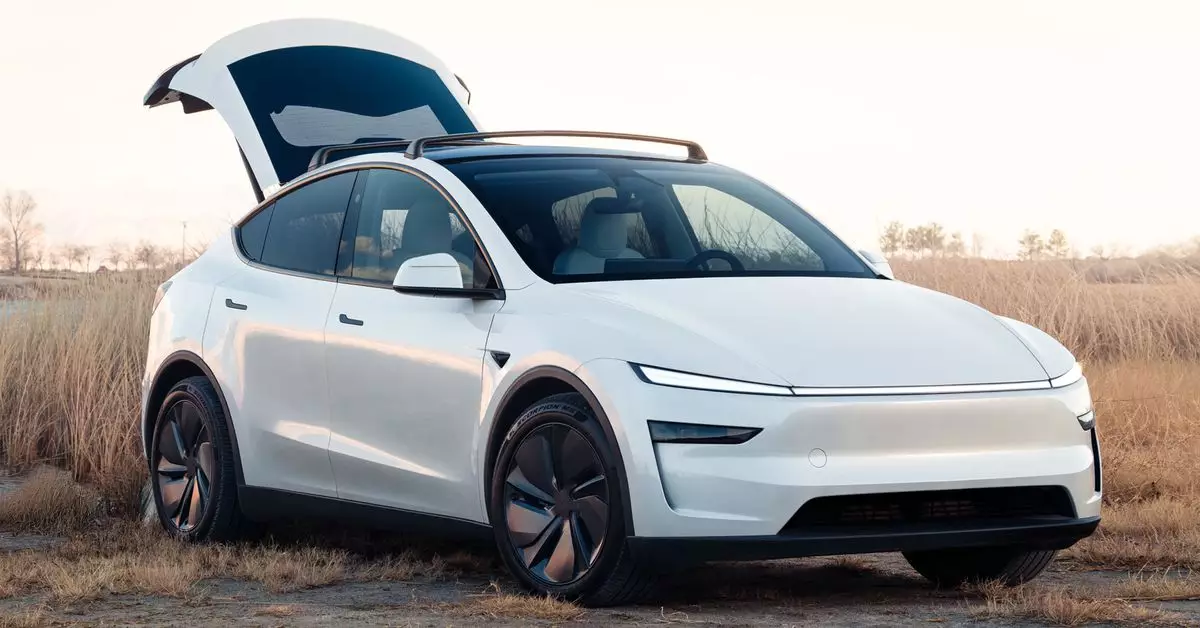Tesla continues to push the envelope in electric vehicle (EV) technology with the recent rollout of its refreshed Model Y. After a successful launch in Asia-Pacific markets, the American automotive giant has now made headlines with its latest offering in the U.S., Canada, Mexico, and Chile. This article will take a closer look at the features of the new Model Y, the challenges it faces in the marketplace, and its reception among a discerning consumer base.
The refreshed Model Y comes with a suite of updates designed to enhance both performance and user experience. Priced at $59,990 before discounts, the Launch Series exemplifies a “fully loaded” package. Key features include the much-lauded Full Self-Driving (Supervised) driver assist and Acceleration Boost, which promise a more dynamic driving experience.
In terms of aesthetics and comfort, Tesla has not disappointed. The updated vehicle showcases new design elements such as an updated front and rear lighting system that adds a modern touch. Interior upgrades also include an 8-inch touchscreen for rear seat passengers, a sound system with additional speakers, and acoustic glass for improved sound insulation. One notable change is the introduction of a turn signal stalk, a departure from the steering wheel buttons seen in recent models. This adjustment may cater to consumer expectations for conventional vehicle controls, an attempt to meld innovation with familiarity.
Despite these enhancements, Tesla faces challenges that go beyond mere product improvements. The company has reported its first decline in year-over-year sales, igniting discussions about the brand’s trajectory amidst growing competition in the EV market. A sleek new lighting setup might not compensate for underlying issues affecting consumer trust and brand loyalty.
Analysts suggest that while the Model Y has critical updates, Tesla must navigate a market increasingly populated by rivals offering competitive alternatives. As car manufacturers around the globe innovate, working to establish their own footholds in the EV sector, Tesla needs to emphasize not just its technological prowess but also its commitment to addressing customer concerns—including service quality, product value, and pricing transparency.
Interestingly, Tesla is maintaining the older version of the Model Y alongside the new Launch Series. This strategic move could prove beneficial for price-sensitive consumers seeking affordability. The price difference between similarly equipped models is only around $4,000, allowing potential buyers to weigh the benefits of upgraded features against their financial considerations. This flexibility may entice more customers during a time when markets are uncertain.
Eager to capture buyer interest, the new Model Y promises a significant 320-mile range—though, notably, this figure awaits EPA verification. In comparison, the previous version had an estimated range of 311 miles, which creates a competitive edge on paper. Acceleration has also seen marked improvement; the new model boasts a 0-60 mph time of 4.1 seconds, a respectable feat for an electric SUV focused on family transport.
However, there is a drawback. The maximum speed has been reduced from 135 mph to 125 mph, which, while not a dealbreaker for typical users, raises questions about how Tesla balances performance with safety for its family-oriented demographic. The implications of this modification beg further examination from a consumer perspective.
Ultimately, the refreshed Model Y reflects Tesla’s ongoing commitment to pushing the boundaries of what electric vehicles can offer. However, the road ahead is fraught with challenges that the company must face head-on. Market dynamics are evolving swiftly, as consumer preferences shift and competition intensifies. Tesla must not only focus on technological advancements but also ensure that customers feel secure in their investment amidst a cloud of concern regarding brand reliability.
As the automotive landscape continues to transform, the true success of the new Model Y will depend on its ability to meet or exceed customer expectations while navigating the complexities of an increasingly crowded market. Only time will reveal whether Tesla’s latest model can sustain the fervor surrounding its brand or whether it will need to rethink its approach in the face of growing competition.

